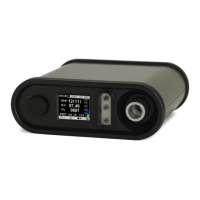What to do if patient circuit verification failed on Inovytec Ventway Sparrow?
- JJeremy BurnsJul 25, 2025
If the patient circuit verification fails on your Inovytec medical equipment, it might be due to connected accessories or the patient being connected, or a disconnected control tube connector. Check all patient circuit connections to resolve this issue.

